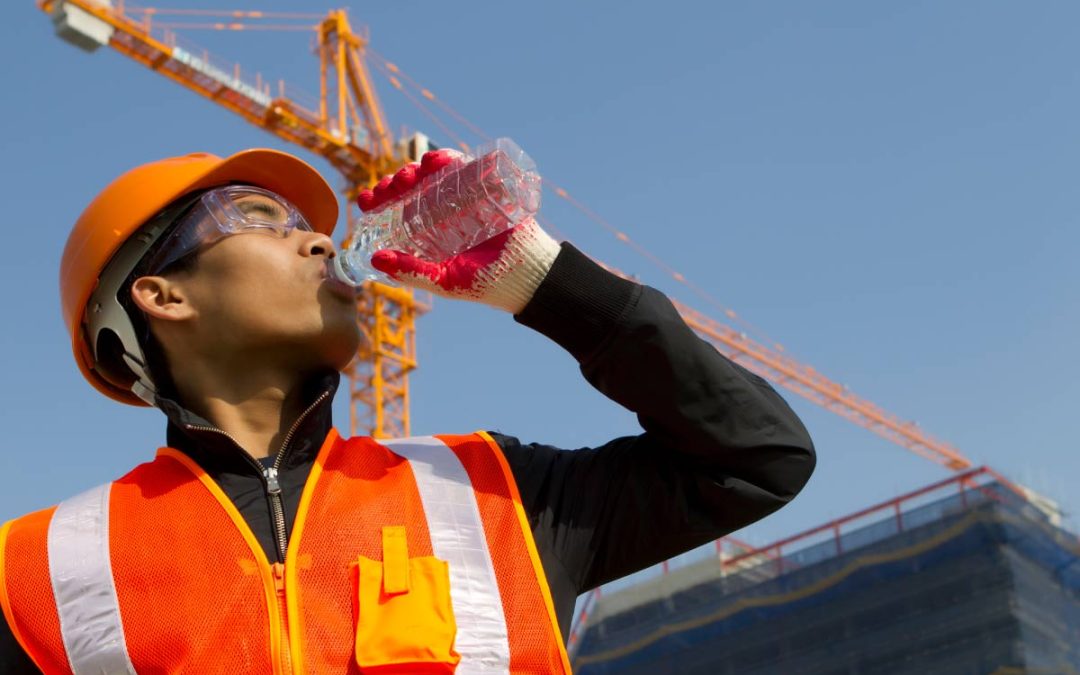Extreme heat poses a significant threat to worker safety. When temperatures soar, workers face a heightened risk of heat stress, a spectrum of conditions ranging from mild discomfort to heat stroke, which can be fatal. Symptoms of heat stress can include heavy sweating, muscle cramps, nausea, dizziness, and confusion. Left untreated, heat stress can quickly escalate, leading to organ damage and even death.
Fortunately, there are well-established heat safety measures that employers can implement to protect their workers. These measures include providing cool water, rest breaks in shaded areas, and allowing workers to acclimatize to hot environments. However, recent trends are concerning. In some areas, there have been efforts to weaken existing heat safety regulations, leaving workers more vulnerable to the dangers of extreme heat.
This article will explore the importance of heat safety for workers, the dangers of heat stress, and the crucial role of heat safety regulations. We will also discuss resources available to employers and workers to ensure safe working conditions in hot environments.
The Dangers of Heat Stress
Heat stress occurs when the body is unable to adequately cool itself. During physical activity in hot weather, the body generates heat. Normally, the body cools itself through sweating. Sweat evaporates from the skin, taking heat with it. However, in hot and humid environments, sweat cannot evaporate as readily, leading to a rise in body temperature.
The severity of heat stress symptoms depends on several factors, including the ambient temperature, humidity level, duration of exposure, physical exertion level, and individual factors like age, fitness level, and acclimatization. Here’s a breakdown of the different stages of heat stress:
- Heat rash: This is the mildest form of heat stress, characterized by an itchy red rash on the skin.
- Heat cramps: These are painful muscle cramps that can occur during or after physical exertion in hot weather.
- Heat exhaustion: This occurs when the body loses excessive fluids and electrolytes through sweating. Symptoms include heavy sweating, weakness, dizziness, nausea, and headache.
- Heatstroke: This is the most serious form of heat stress and is a medical emergency. Symptoms include a core body temperature above 104°F (40°C), confusion, seizures, and loss of consciousness. If left untreated, heatstroke can be fatal.
The Importance of Heat Safety Measures
Heat stress is a preventable condition. By implementing effective heat prevention, employers can significantly reduce the risk of their workers suffering from heat-related illnesses. These measures include:
- Providing Cool Water: Ensuring easy access to cool, potable water is essential. Workers should be encouraged to drink fluids regularly, even if they are not thirsty.
- Scheduling Rest Breaks in Shaded Areas: Workers performing physical labor in hot environments should be given frequent breaks in cool, shaded areas. The length and frequency of breaks will depend on the heat index and the physical demands of the job.
- Acclimatization: Workers who are new to working in hot environments should be gradually acclimatized over a period of days or weeks to reduce the risk of heat stress.
- Engineering Controls: Employers should consider implementing engineering controls to reduce heat exposure, such as providing air conditioning or using fans to create air circulation.
- Personal Protective Equipment (PPE): In some cases, workers may need to wear personal protective equipment (PPE) such as hats and loose-fitting, breathable clothing to stay cool.
The Weakening of Heat Safety Regulations: A Cause for Concern
While heat stress is a well-recognized hazard, there have been recent efforts to weaken heat safety regulations in some regions. This is a cause for serious concern. Heat safety regulations are essential for protecting workers from preventable illnesses and deaths. Weakening these regulations puts workers at greater risk and could lead to an increase in heat-related illnesses and fatalities.
There are several reasons why strong heat safety regulations are crucial:
- Worker Safety: Heat safety regulations are designed to protect workers from the dangers of extreme heat. By setting minimum standards for hydration, rest breaks, and acclimatization, these regulations help to ensure that employers are taking steps to keep their workers safe.
- Public Health: Heat stress is not just a workplace issue. It can also affect public health, especially for vulnerable populations like outdoor workers and the elderly. Strong heat safety regulations can help to reduce the overall burden of heat-related illnesses on healthcare systems.
- Economic Benefits: Heat stress can lead to lost productivity and increased healthcare costs for employers. Strong heat safety regulations can help businesses to save money by reducing the risk of heat-related illnesses among their workforce.
How Workers Can Stay Safe in Hot Weather
In addition to relying on employers to implement heat safety measures, workers can also take steps to protect themselves in hot weather:
- Stay Hydrated: Drink plenty of cool water throughout the day, even if you are not thirsty. Avoid sugary drinks and alcohol, which can dehydrate you.
- Wear Loose-Fitting, Breathable Clothing: Light-colored, loose-fitting clothing made from breathable fabrics like cotton will help to keep you cool.
- Take Breaks in Cool, Shaded Areas: Regularly seek out cool, shaded areas to rest and cool down.
- Pace Yourself: Avoid strenuous activity during the hottest part of the day. If your job requires physical exertion, take breaks more frequently and work at a slower pace.
- Be Aware of the Signs and Symptoms of Heat Stress: Educate yourself about the signs and symptoms of heat stress. If you experience any symptoms, seek cool shelter immediately and drink fluids.
- Communicate with Your Supervisor: If you feel overheated or unsafe, let your supervisor know right away.
Heat stress is a serious health risk for workers in hot environments. By implementing effective heat safety measures, employers can significantly reduce the risk of their workers suffering from heat-related illnesses. Strong heat safety regulations are also essential for protecting workers and ensuring public health.
Workers also have a responsibility to take steps to protect themselves in hot weather. By staying hydrated, wearing appropriate clothing, taking breaks, and being aware of the signs and symptoms of heat stress, workers can help to keep themselves safe. Let’s work together to ensure that all workers have a safe and healthy work environment, regardless of the temperature.




Recent Comments